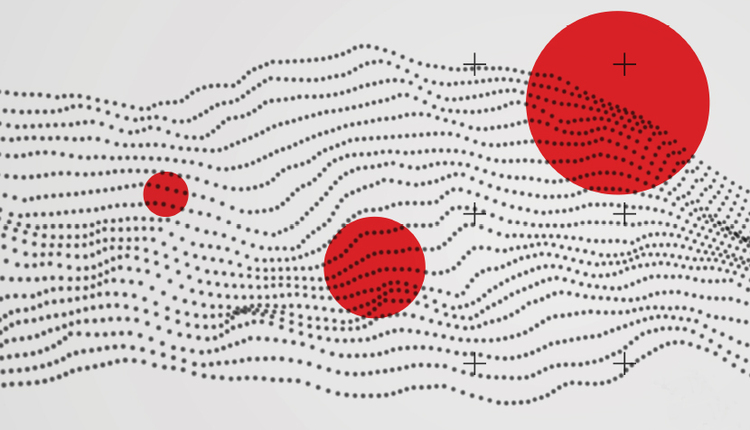
Records management is the effective and systematic control of an organization’s records, regardless of medium, through their entire life cycle–from receipt or creation until their final disposition. Records management ensures that valuable records evidencing an organization’s activities and that have legal, fiscal, administrative or historical value are protected and accessible while useless records are systematically destroyed.
If your organization does not have a records management program, I cannot stress enough the importance of starting one in today’s world of electronic documents and potential litigation exposure. News reports of records management mishaps at several Fortune 500 companies should have you interested in implementing standardized records management practices within your organization.
I provide some basic steps in establishing your organization’s records management program based upon industry standards and practices, in addition to my years of experience as a records and information professional.
1. Establish a records management team to develop and implement a strategic plan for the program and to provide a governance structure.
- Assign team responsibilities and authorities:
- An integrated records management steering committee consisting of an executive program sponsor (senior vice president or chief executive officer who reports to the board) and key stakeholders from records management, legal, information technology, compliance and other key business groups, will meet regularly to provide program governance, strategic guidance and support.
- The records management staff has responsibility for developing, implementing and maintaining the program.
- A network of records coordinators will serve as the liaisons between the records management staff and the departments in your organization.
- Identify drivers for developing a records management program, and define a strategic plan, goals and objectives that provide your program focus and high visibility and assists in determining the resources needed to support the program.
- Develop mission and vision statements in alignment with the strategic plan of your organization. The vision statement describes where you want to see the records management program two or three years down the road and the mission statement describes the purpose of the program, services offered, whom the program serves and guides your program towards achieving its vision. These statements will help you prioritize projects and develop an implementation plan based on the resources available.
- Obtain senior management support for the establishment and continual management of a records management program.
- Determine what services will be done “in-house” and what services will be done by outside vendors and consultants.
2. Conduct an organization-wide inventory of the records in your office.
- The records inventory identifies what information your organization has to manage, including physical and electronic, and is essential to a good records and information management program. The inventory is the groundwork for which you will develop your program's records retention schedule in step four below. The inventory will help you identify which materials your organization considers:
- Records (recorded information created or received by your organization in pursuance of legal obligations or in the transaction of business and has value requiring its retention)
- Non-records (reference materials, personal papers, junk mail, publications, convenience file, duplicate copies)
- Vital records (records which would be needed immediately after an emergency to continue your organization’s operation)
- Archival records (historical records of enduring value that are preserved and stored in your organization’s archives)
- Once you have identified all the departments in your organization and begin to get a feel for the scope of records to be inventoried, you will need to consider whether you have the resources to conduct the project or if you should hire a consultant to conduct the inventory.
- You can conduct the inventory via physical inventory, surveys, interviews or a combination of these methods. I think it is important to interview record coordinators from each department to identify and review document repositories and any systems used to create information and process transactions. Department document repositories could include network file shares, SharePoint, employee computers and file cabinets. While conducting department interviews, you should also check for closets and any unoccupied offices that may be holding stored records.
- The inventory should include whether records exist in more than one format, media, software and physical location of records.
- Review organizational repositories checking for records that are stored in:
- Email and other messaging or collaboration servers
- Enterprise-wide SharePoint deployments
- Enterprise content management systems
- Electronic records management systems
- Back-up servers
- On-site centralized records centers
- Off-site storage areas for physical and/or electronic records
- Once a draft list of documents for each department is prepared, it should be reviewed with the department to make sure no records were overlooked.
- While conducting the inventory, create a log of all repositories in your organization. This will assist in the event of discovery. Your legal counsel will be aware of all responsive systems and repositories.
3. Establish your organization’s records management policies and procedures.
- The records management policy serves as the basis for the entire program, is your program's primary governance instrument and provides employees guidance. The policy should be endorsed at the highest decision-making level, publicized throughout your organization and made readily available to all staff.
- Developing your records management policy will be dependent on your organization’s culture. Your policy should include:
- Defining records management responsibilities assigned to employees of your organization to include the executive sponsor, steering committee, records management and information technology staff, business unit managers, system administrators, record coordinators and general users.
- Definition of a “record.”
- Whether records will be kept in a centralized area, decentralized within work areas or a combination of both.
- Records retention and disposition procedures to include: how draft documents and working papers will be handled, who will be responsible for maintaining the official record copy and litigation hold procedures.
- The records management procedures should describe in detail how to comply with the requirements outlined in the records policy and other instruments. It provides records management processes for the records staff, recordkeeping processes for the records coordinators and end users and, when applicable, specific procedures for business units.
4. Develop a records retention program.
- A records retention program consists of a method for determining retention periods, a records retention schedule and retention policies and procedures. This ensures your organization’s records are kept as long as required to meet regulatory, legal and business requirements; that records are not destroyed too early or retained too long; and that your organization follows systematic retention and defensible records destruction practices.
- The retention schedule provides your organization’s functional groups retention and disposition instructions for related records based on regulatory, legal and business requirements. Establishing a retention schedule is the single most important thing you can do to guarantee the success of your organization’s overall records management program. A retention schedule is the foundation of a records management program and applies to records in any format, i.e., paper, electronic (disk, CD, database, email, etc.). All other components of a records management program rely on the records retention schedule that facilitates your organization’s legal compliance, efficiency and risk management.
- The retention schedule should be tailored to your organization’s needs ensuring all records essential to your organization are retained only as long as needed based on documented research of legal, fiscal, administrative and historical requirements. Retaining records longer may increase organizational liability.
5. Implement a records management training program.
- All staff, contractors and records coordinators need to be trained and know their records management responsibilities. This can be accomplished via a combination of vehicles:
- Records management intranet site
- New employee, records coordinator, business unit/department training
- Handouts
- Regular all-employee announcements related to records management policies and procedures
By now, you may be thinking, “This is a huge project.” Starting a records management program is not a one-time single project and then you are done. It can be a complex process, and once the program is launched, it will regularly need to be worked, updated and grown. It takes time to build a program, and depending on your resources, it certainly can be accomplished in stages. Your organization will reap the many benefits of a records management program and will be glad it started one.
This content originally appeared on the Allen Podraza's LinkedIn Posts. Follow his posts or on Twitter @AllenPodraza.














